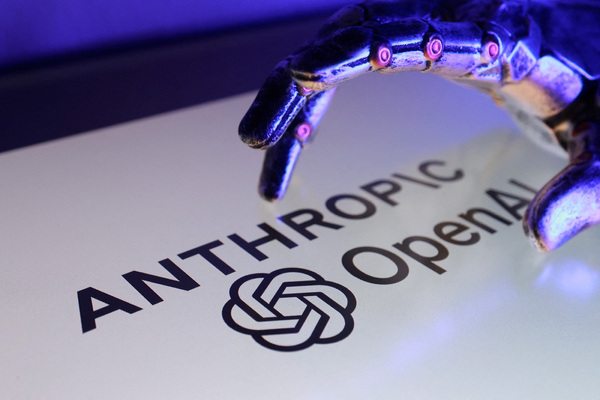The geography of innovation

Zuzanna Stamirowska at Pathway explains what global business leaders need to know about research funding policies
Capturing the transformative power of artificial intelligence is about more than compute power and data access; it’s about talent and research and the ecosystems that nurture them. The United States is scaling back its public investment into academic science research while Europe is doubling down on its commitment to science.
As these divergent trends emerge on either side of the Atlantic, business leaders must understand how this impacts them now as AI becomes more integral to their business operations.
Research funding on executives’ radar
Innovation doesn’t emerge from nowhere. It is cultivated in environments that promote curiosity and encourage collaboration. Universities play a critical role in this process as incubators for ideas that become the foundations of billion-dollar businesses. From DeepMind to Databricks, and indeed Pathway, many of today’s major players in AI can trace their roots back to academic research.
However, when academia is underfunded, that pipeline is threatened.
The US administration’s decision to cut funding to the National Science Foundation (NSF), which is a core element to the country’s scientific research infrastructure, has already led to cancelled grants, lab closures and job losses. This is a blow to academia and a warning sign for the country’s wider tech ecosystem.
With fewer ideas generated in collaborative environments, there are fewer opportunities for the next big ideas that will improve how AI is used in society and business. What’s more, when educators leave, the talent pool suffers, which is an issue for businesses who need skilled people to scale their AI operations.
The erosion of expertise
Drying talent pools are not just a short-term concern. France’s nuclear sector tells a cautionary tale as decades of underinvestment meant the country struggled to restart its nuclear programme due to a loss of knowledge and experienced professionals. The US’s AI sector could face the same fate if it fails to protect academic research infrastructure.
It is also important to recognise that not all AI breakthroughs originate from AI research. Many transformative ideas are sparked in fields like mathematics, physics, neuroscience and theoretical computer science. These disciplines thrive in well-funded academic environments and stifling them could inadvertently stall the progress of AI and other emerging technologies.
The corporate research conundrum
As public funding recedes, private corporations could step in to fill the void. While on one hand this appears as a pragmatic solution, it comes with trade-offs. Corporate labs are driven by commercial objectives, not scientific discovery for public good. Breakthroughs are guarded as secrets and access to cutting-edge research becomes gated. This creates a closed systems in which only the largest players benefit. Other businesses are left at a disadvantage.
This should come as a concern to the C-suite. The future of your company’s competitive edge could depend on access to ideas and talent that are increasingly being held in private hands.
Europe’s strategic response
By contrast, Europe is making a bold bid to become the new centre of AI academia. The European Union’s €500 million Choose Europe For Science initiative, alongside national programmes in countries including the UK, France and the Netherlands, signals a coordinated effort to attract top-tier researchers and foster scientific exploration for progress rather than profit.
If these investments are paired with practical support, including better immigration procedures, competitive salaries and access to cutting-edge compute resources, Europe could become the home of the next generation of AI talent and their breakthroughs.
The investment gap
Europe’s ambition alone won’t be enough to position it at the front of the AI race. Europe still lags behind the US in total R&D spending as a percentage of GDP, and estimates suggest an additional €750-800 billion per year would be needed to close the gap. But there is a clear direction of travel. While the US risks an erosion of its research talent, Europe is positioning itself as fertile ground for great minds and new ideas.
This divergence creates both risk and opportunity for business leaders. Companies that rely on cutting-edge AI, data science and engineering should be evaluating what funding policy change means for their R&D strategies. Where will the next wave of talent come from? Where should investments, partnerships and hiring strategies be focused?
An inflection point for academic AI research
Thirteen of the US’s top universities, including Massachusetts Institute of Technology (MIT), Princeton University and Brown University, have filed a lawsuit to block the NSF cuts. However, if these efforts fail and Europe can execute its vision effectively, we may see a shift in the geography of academic innovation.
For business leaders and decision-makers, this is something to be considered. The regions that invest in their academics will be those that shape the technologies and markets of tomorrow.
Whether you’re building AI products or investing in applications to boost efficiencies, artificial intelligence is influencing most businesses around the world. Understanding the implications of global academic research trends is therefore a matter of essential strategic foresight.
Zuzanna Stamirowska is CEO and Co-founder of Pathway
Main image courtesy of iStockPhoto.com and imaginima

Business Reporter Team
Most Viewed
Winston House, 3rd Floor, Units 306-309, 2-4 Dollis Park, London, N3 1HF
23-29 Hendon Lane, London, N3 1RT
020 8349 4363
© 2025, Lyonsdown Limited. Business Reporter® is a registered trademark of Lyonsdown Ltd. VAT registration number: 830519543





